
POMPEII GETS ALL THE scientific and public attention, and it's not hard to understand why. The city buried by the eruption of Mount Vesuvius in A.D. 79 provides an endless source of artistic marvels and archaeological insight, and the cone-shaped stratovolcano still looms over Naples with familiar menace. But just on the other side of Naples' modern sprawl is a kind of shadow Pompeii called Baiae, another ancient town lost to volcanic activity-but not due to a sudden cataclysm. Once a legendary playground for Rome's elite, Baiae slowly sank to a watery end.
Thousands of years before Baiae was known as a resort destination, it would have been the worst place in the world to be. Around 39,000 years ago, the Gulf of Pozzuoli, where Baiae was eventually founded, exploded with 100 times the power of Vesuvius. The waters of the gulf, about 10 miles west of Naples, and the land surrounding it cover a supervolcano known today as the Campi Flegrei, or Phlegraean Fields, meaning the "burning" or "fiery" fields. The caldera is eight miles across, shot through with faults and speckled with 24 craters from smaller bursts on land and underwater. The volcano erupted again around 15,000 years ago, creating vast deposits of the stone called Neapolitan yellow
A mosaic floor with a geometric pattern made of black and white squares of marble called tesserae now sits at the bottom of the Gulf of Pozzuoli off the modern Italian town of Baia. The floor once belonged to a sumptuous seaside home called the Villa with the Porch Entrance in the ancient resort of Baiae tuff, which fronts many of Naples' historic buildings.
The Campi Flegrei has not erupted with that kind of force since but has nonetheless continued to shape the area. Its craters formed inviting basins for Roman ports, its geothermal activity fed hot springs that drew travelers and emperors alike, and its restlessness reshaped the topography and shoreline.
This story is from the May/June 2023 edition of Archaeology.
Start your 7-day Magzter GOLD free trial to access thousands of curated premium stories, and 9,000+ magazines and newspapers.
Already a subscriber ? Sign In
This story is from the May/June 2023 edition of Archaeology.
Start your 7-day Magzter GOLD free trial to access thousands of curated premium stories, and 9,000+ magazines and newspapers.
Already a subscriber? Sign In
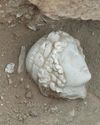
Digs & Discoveries - A Friend For Hercules - Archaeologists discovered a finely carved head depicting Apollo, god of the sun, music, and poetry.
While digging at the crossroads of the two main streets in the ancient city of Philippi in northern Greece, archaeologists discovered a finely carved head depicting Apollo, god of the sun, music, and poetry.
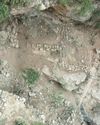
Digs & Discoveries - A Fortress Sanctuary - A sprawling 2,000-year-old fortress in the Zagros Mountains of Iraqi Kurdistan appears to have included a sanctuary dedicated to the ancient Persian water goddess Anahita.
A sprawling 2,000-year-old fortress in the Zagros Mountains of Iraqi Kurdistan appears to have included a sanctuary dedicated to the ancient Persian water goddess Anahita.
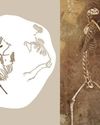
Like Cats And Dogs – Archeologist fund the skeleton of a male Eurasian lynx (Lynx lynx), a notoriously shy creature.
Оn the periphery of Zamárdi, an ancient lakeshore settlement in west-central Hungary, archaeologists uncovered a nearly five-foot-deep beehive-shaped pit with the skeletons of four adult dogs buried in successive shallow layers.
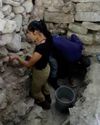
A Dynasty Born In Fire- How an upstart Maya king forged a new social order amid chaos
At the beginning of the Terminal Classic period (ca. A.D. 810-1000), many of the great kingdoms of the southern Maya lowlands-among them Tikal, Palenque, and Calakmul-were being abandoned or collapsing. For many years, scholars have assumed that most, if not all, the other kingdoms across the Maya world must have also been in steep decline.
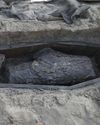
Medical Malfeasance - Archaeologists uncovered two coffins during excavations of a nineteenth-century cemetery in Quebec City that provide evidence of the illicit practice of diverting corpses for the study of human anatomy.
Archaeologists uncovered two coffins during excavations of a nineteenth-century cemetery in Quebec City that provide evidence of the illicit practice of diverting corpses for the study of human anatomy. Starting in 1847, medical students were required to have practical experience studying human anatomy, but legal options to procure cadavers were limited
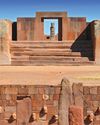
RISE AND FALL OF TIWANAKU
New dating techniques are unraveling the mystery of a sacred Andean city
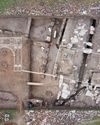
Making a Roman Emperor
A newly discovered monumental arch in Serbia reveals a family's rise to power in the late second century A.D.
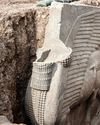
The Assyrian Renaissance
Archaeologists return to Nineveh in northern Iraq, one of the ancient world's grandest imperial capitals

Java's Megalithic Mountain
Across the Indonesian archipelago, people raised immense stones to honor their ancestors
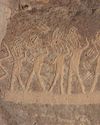
THE SONG IN THE STONE
Located in a desert gorge in southern Peru, Toro Muerto is one of the richest rock art sites in South America. It includes at least 2,600 boulders bearing petroglyphs, many featuring figures known as danzantes who appear to be dancing.